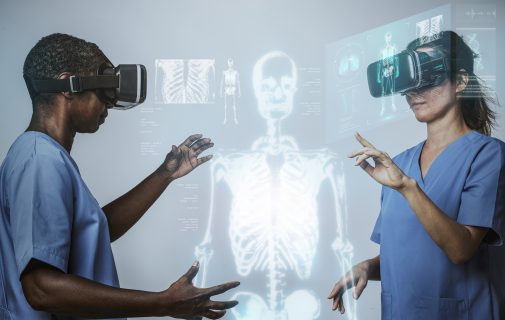Medical annotation tools play a crucial role in the advancement of healthcare and medical research. These tools help medical professionals accurately label, categorize, and analyze medical data, mostly imaging data like CTs, MRIs, X-Rays and others.
By providing precise annotations, these tools facilitate the training and optimization of machine learning algorithms used in medical imaging, diagnosis, and treatment planning. Additionally, medical annotation tools enhance collaboration among healthcare teams by providing a standardized framework for interpreting complex medical data. Let’s take a look at the tools we’re using for medical data annotation at medDARE.
Redbrick.AI
Redbrick AI‘s Fast Automated Segmentation Tool (F.A.S.T) is designed to assist healthcare professionals in annotating and segmenting various types of medical images, such as CT scans, MRI images, and ultrasounds. It can divide images into parts and adapt to new image types without the need for additional data.
RedBrick AI provides a SaaS platform for annotating medical image data and offers F.A.S.T. for use in the radiology domain, presenting a possible solution for enhancing diagnostic accuracy and speed in healthcare.
3D Slicer
3D Slicer is a free open source software (BSD-style license) that is a flexible, modular platform for image analysis and visualization. 3D Slicer is extended to enable development of both interactive and batch processing tools for a variety of applications.
AI-assisted annotation tools can automatically segment anatomical structures using pre-trained or custom models.
V7 Darwin
From X-rays to OCT scans, ultrasound videos, and volumetric DICOM series – V7 Darwin is used for almost any medical images without compatibility issues. Users can visualize organs and annotations in cinematic 3D for easier navigation. It uses one-click DICOM segmentation with AI models fine-tuned for radiology and healthcare. Annotators and quality managers can assign user roles, delegate annotation tasks, and incorporate reviews to streamline their workflow.
ITK-Snap
ITK-SNAP is a general-purpose interactive tool for image visualization, manual segmentation, and semi-automatic segmentation. It was created in the early 2000s with the vision of an uncluttered tool that would be easy for computer non-experts to learn and would be focused almost entirely on the problem of segmentation, with the creep of additional non-segmentation and domain-specific features kept to a minimum. Until recently, ITK-SNAP only supported single-modality image segmentation, and its semi-automatic mode relied on the structures of interest being distinguished from surrounding tissues by different image intensity or strong image edges.
In conclusion, the significance of medical annotation tools cannot be overstated in the realm of modern healthcare. These tools serve as indispensable assets in the quest for more accurate diagnoses, effective treatments, and groundbreaking medical discoveries.
Medical teams at medDARE have experience in using all annotation tools mentioned above. Our professionals can be also trained to use your internal labeling team, if needed. We’re constantly searching for new tools which will be the best solution for our clients, that’s why the list of tools we work with always develops further. Besides this, due to having an in-house software development team, we’re able to adapt open-source data annotation tools following the needs of our clients.



























